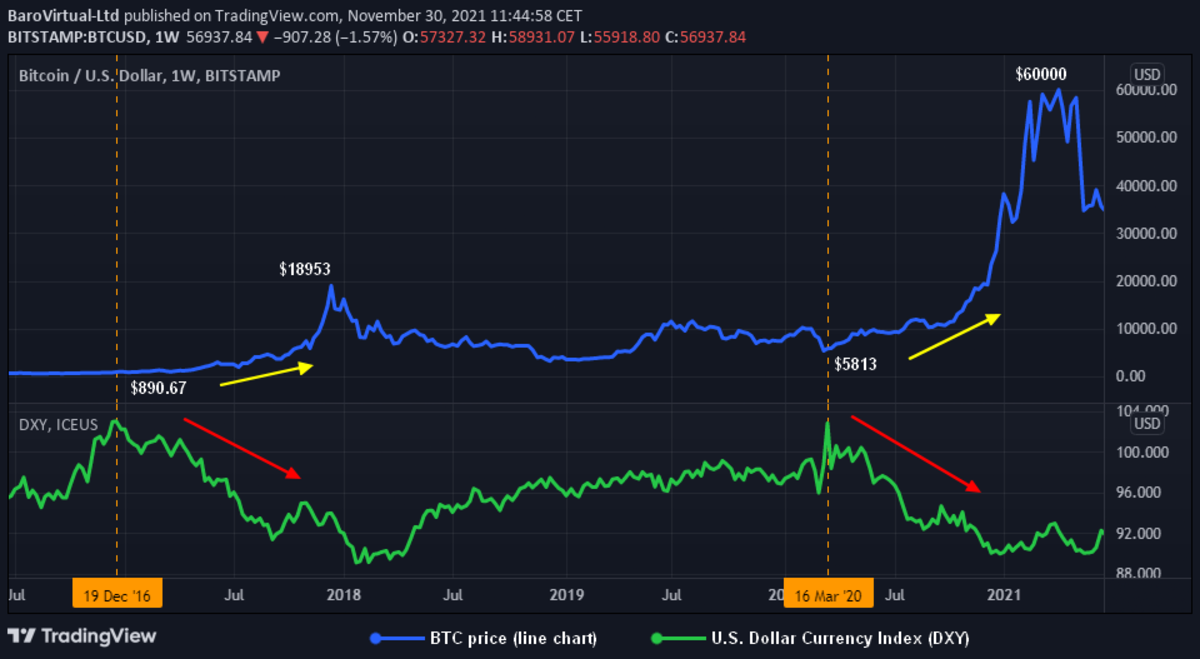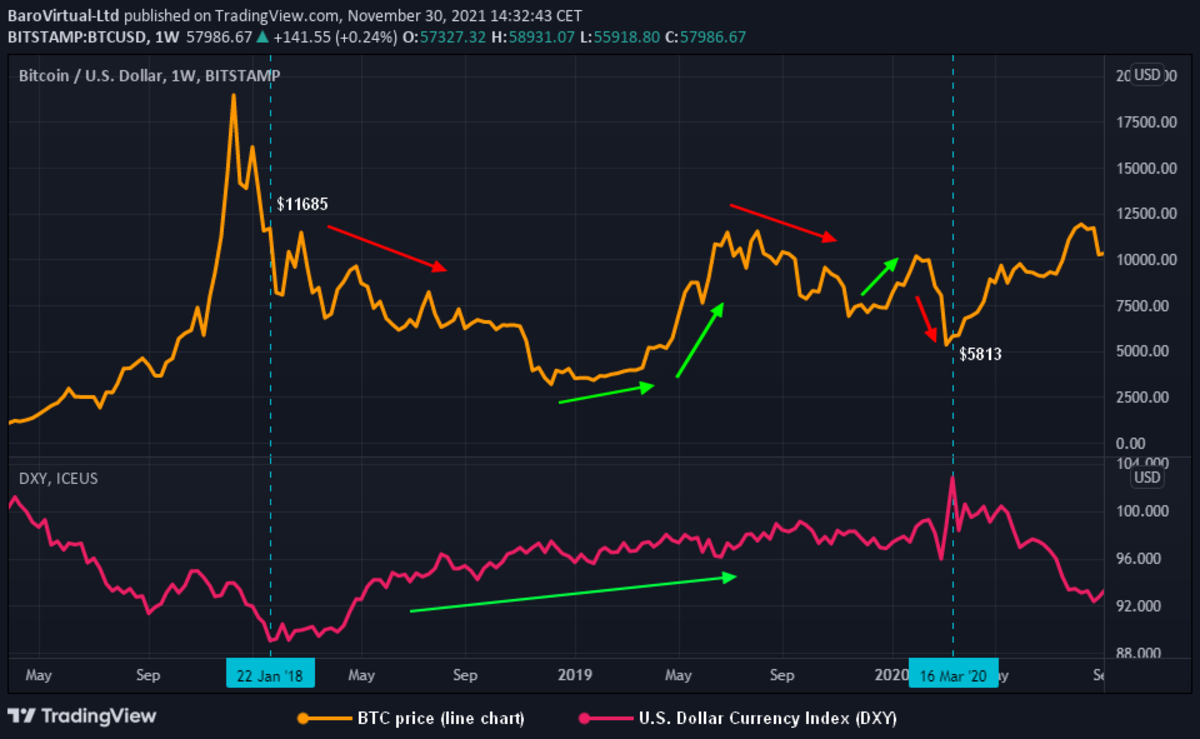For probably about two years now, it has been generally accepted in the cryptocurrency community that “BTC is an independent asset class,” which demonstrates that the first cryptocurrency performs well as an investment tool that hardly correlates with the economic cycle and is not even associated with other asset classes. On August 18, 2020, CoinShares even released a whole report[1] on this, which mainly talked about the lack of correlation between bitcoin and commodities and traditional stocks.
But what about the correlation with the U.S. Dollar Currency Index (DXY)? Max Keiser was one of the first[2] to draw our attention to bitcoin’s negative correlation with the U.S. dollar. In other words, when the U.S. dollar rises, then, as a rule, BTC tends to fall. I’ll also add that there is rarely a positive correlation between BTC and the U.S. dollar.
Still, if there is a positive correlation, it carries medium- and long-term risks for a stable upward trend in bitcoin.
Examples Of Negative Correlation Between BTC And DXY

In the chart above, we can see that the downtrend in the U.S. dollar, which began on December 19, 2016, at $103.10, led to a sharp rise in the price of BTC from $890 to $18,953, while the U.S. dollar fell to $89 by January 22, 2018. A similar situation was observed on March 16, 2020, when the U.S. dollar entered a brutal downtrend due to the U.S. financial government institutions’ not-entirely-rational monetary policy.
These two examples perfectly demonstrate the classic inverse correlation approach between bitcoin and the U.S. dollar. These are not the only examples of this statement; you can easily find other earlier examples through a trading charts provider.
Examples Of Positive Correlation Between BTC And DXY




